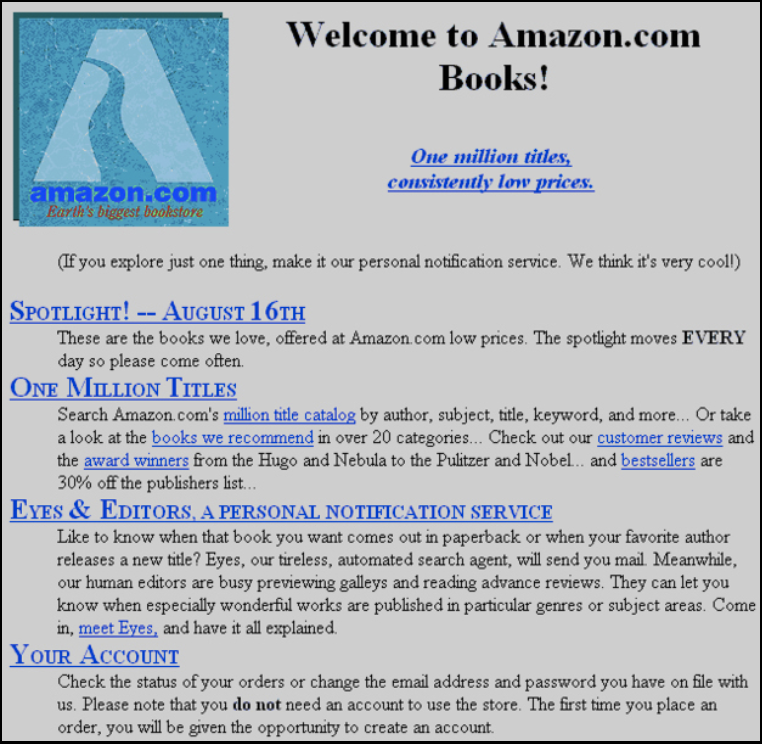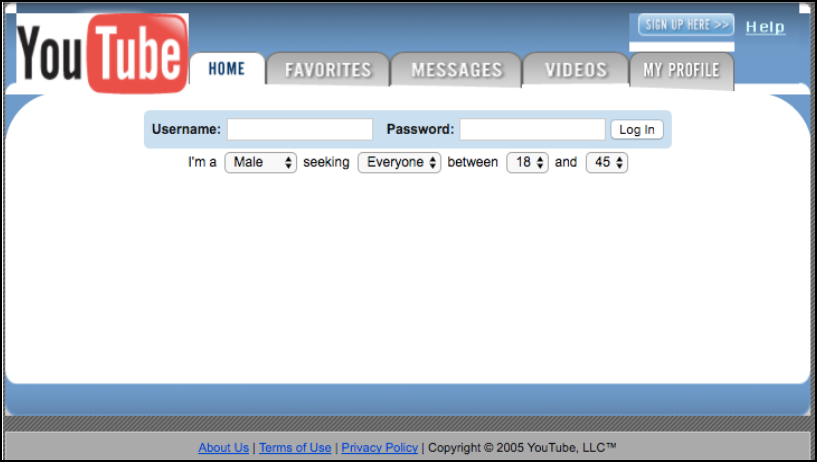(631) 486-7589

There’s no one-size-fits-all timeline for when it’s time for a website redesign, but the general rule of thumb is that it should be updated every two years. However, if, for example, you're in the online retail industry, you may need to do more frequent updates. As such, we’ve laid out 10 Signs It’s Time for a Website Redesign to help you prioritize what could benefit your business the most.
Why Most Websites are Outdated
As a website design agency, we see countless websites that are aged and non-responsive. Our belief is that your site is your online home; therefore, updates need to be strategically budgeted and carried out sooner rather than later. Unfortunately, many executives view website redesign a massive, one-time investment, and end up putting off critical updates.
The reality is a website redesign doesn’t have to be (and we’d argue shouldn’t always be) a complete rehaul. Choosing to do several drastic changes, whether it be branding, structure, or layout, can be extremely off-putting to your regular visitors if done too quickly. Take a look at any popular website and think about what it looked like when it first started. Here are a few examples as a reminder:Amazon (1995)

Youtube (2005)

Pinterest (2010)

It’s funny to see how these sites first looked, and yet, none of them changed instantaneously.
Successful online companies don’t wait for three, four, seven (ah!) years to evolve. Instead, we recommend that you think about two to three improvements that can be done in the next few months to improve the overall customer experience. What goals are you trying to achieve with your website and what changes would result in the highest customer impact?
Review these 10 signs it's time for a website redesign to do a quick self-website check:
Sign # 1 - Mobile-Unfriendly
We’ll start with mobile friendliness because it’s one the most important aspects of your website (and one of the most ignored). You may have heard the term “responsive website design” before, meaning that visitors can view your desktop site in response to the mobile screens. Visitors should be able to access your site with ease on their tablet or cell phone, including text, images, videos, shopping carts, and user registration.
Even if your site is only a few years old, it may already be mobile unfriendly. As much as 75% of your users may be accessing your site via mobile, so if your site is unresponsive, it could have dire consequences for your bottom line. The abandonment rate for mobile shopping carts is higher (at 97%) than that of desktop shopping carts (at 70 – 75%). If you don’t have time to optimize your site, consider outsourcing this task to a specialist. The ROI is well worth it.
Not sure if you’re mobile friendly? Click here for your free website consultation.
Sign # 2 - Slow Loading Site
In today’s technological age, people expect everything now. How does this affect your business? Slow loading websites cost the U.S. e-commerce market more than $500 billion annually. If your page takes longer than 3 seconds to load 40% of visitors will leave. If it take more than 10 seconds to load, half of your visitors will abandon your site and never return. Never return!
One of your biggest superpowers to counter website abandonment is to test the speed of your site (loading time of pages, images, etc.). Two factors will make a difference in loading time - choosing a quality web host and being cognizant of the amount and size of content on one page.
Older websites tend to have too much content, unsupported video files, or large files. Another reason it may be time for a website design.
Sign # 3 - Change in Branding
Looking back at Amazon, Facebook and Pinterest started, it’s clear that refreshing your brand is a necessary step in staying modern and competitive. With a new logo, colors, and direction should come a new website look. Consulting with an expert web designer can go a long way in capturing your
audience’s attention.A word of caution: changing your brand or logo too often can cause customer shock. If you choose to do this, be sure you have a clear intention and purpose in mind that impresses your clientele.
Sign # 4 - New Services or Products
Remember how we emphasized smaller changes rather than one giant leap? Adding new services or products to your page is one of those smaller steps that can be done on a more regular basis. Perhaps you’re making the leap from a mailed catalog to online products. Or you have a new marketing demographic and design concept in mind. It’s a surefire sign that you’re in need of a website redesign (or at minimum an addition).
Sign # 5 - Low Rankings or Visibility
Another red flag that your site needs a revamp is if you’re not getting enough visitors. Two prime factors that play a role in a low ranking page are 1) too much content and not enough keywords and 2) slow loading page. If you initially built your website with the user interface (front end design) in mind, and not SEO (search engine optimization), you’re probably in need of a keyword revamp. Equally important, Google uses site speed as a ranking factor (refer to #2).
Click here to learn 5 Myths About SEO Optimization for Your Small Business
Sign # 6 - High Bounce Rate
If your site gets a lot of visits, but not a lot of conversions, it means you aren’t meeting the needs of the user. The bounce rate is the percentage of single interaction visits to a website, such as page views, events, or transactions. An average bounce rate is 41-55%, so anything over 56% is cause for concern.
Factors that can affect visitor follow through are a poorly designed user interface, confusing navigation, lack of CTAs (calls to action), and unclear messaging. Hiring a professional to design your website can significantly reduce your bounce rate.
Sign # 7 - Millennial Demand
According to Forrester Research, Millennials (who are now in their mid-20s to early 30s) use mobile apps to make purchases more than any other generation, including their younger counterparts, Gen Z (college-aged and below). While desktop traffic still accounts for a lot of site visits, mobile apps are gaining ground. Industries like banking, media, gaming and other interactive services are becoming more popular to access via mobile app only. However, retail and real estate are making some impressive gains as well, especially with Millennials and Gen X (mid-30s to early 50s) who have more buying power.
Apps do not have to require an internet connection once downloaded and installed, and can provide more web responsive design than a desktop site. Keep in mind that App usage (90% of the time) dominates browsers in terms of how users interact with their mobile devices, so if you business model fits the mold, it could be a valuable addition.
Sign # 8 - Ecommerce Updates
As footprints in brick-and-mortar stores like retail, banks, travel, and insurance agencies weaken, investing in eCommerce solutions becomes a priority to evolve and survive. Creating an online system for products and services, with a mobile friendly payment solution is a winning strategy for most businesses to increase sales.
Sign # 9 - Complex Content Management System
Do you need to hire a developer every time you want to make changes or add-ons to your site? If your site was started on an open source CMS system or you have multiple plugins, then making changes is probably a complex (and tiring) process. Revamping the site’s backend system is a way to take power back into your hands so that future changes are easier and painless.
Sign # 10 - Your Customers Say So
Consider creating a quick survey to ask customers five questions about their experience with your website. After all, they are the ones who have to use your site, and often have valuable feedback that can help you improve conversion and customer experience.
To save time, use an automated service if you want to do a mass survey. Or choose a specific persona/demographic to ask and send out personalized emails if possible. Keep the review short and straightforward to increase the number of responses. Many customers won’t need incentives and will be eager to give their feedback.
Sending a follow-up email to customers detailing any changes you will implement will internally motivate them to participate in future studies without cost to you.Conclusion
Remember, baby steps. Use these 10 signs that it’s time for a website redesign to determine what your greatest weakness is and how repairing it could benefit your bottom line. Then contact Dotlogics to help you get started. We’ll work with you to get the wheels turning, lay out a clear plan of action, and turn your website around in no time.
Sources for Stats:
HostingFacts.com, https://hostingfacts.com/internet-facts-stats-2016/
Internet Archive - Wayback Machine, https://archive.org/web/
Forrester Research, https://go.forrester.com/
Let's Get to Work.
Have an unsolvable problem or audacious idea?
